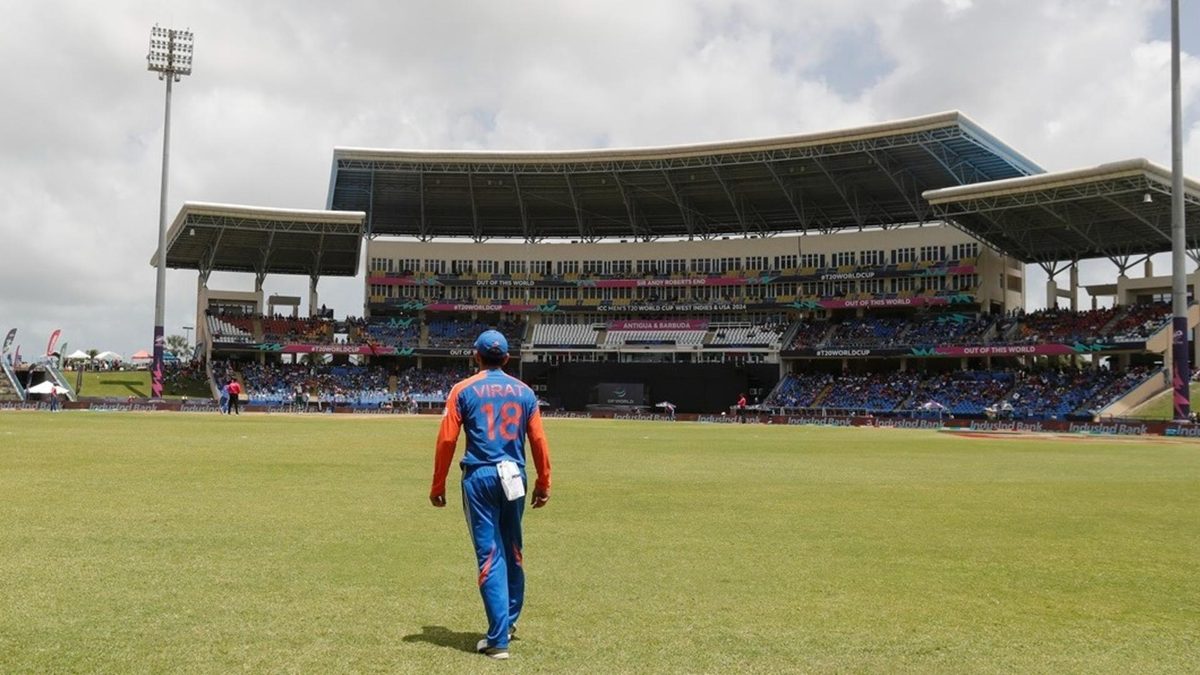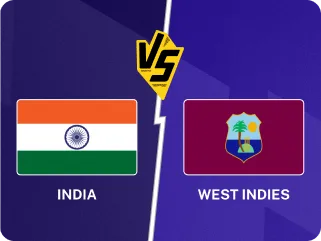
“He’s [Virat Kohli] a quality player, and you can go through that [ordinary form]. He’s looking good, the intent is there,” assured Rohit Sharma after India’s T20 World Cup semi-final against England.
Seven innings into the 2024 T20 World Cup, Kohli’s series aggregate reads 75 runs from 75 balls across seven innings. If one removes the three outings at the much-debated New York surface, the numbers – 70 runs in four innings, strike rate 106 – read marginally better.
Rohit’s defence of Kohli, thus, might come across as a captain trying to defend a teammate. Yet, perhaps more can be read into the “looking good” bit.
When India included both Rohit and Kohli for the T20Is against Afghanistan earlier this year, the message had been clear. Despite not playing in the format for India since the 2022 edition, both were all set to make it to the World Cup squad even if that meant altering a side that had been doing well in their absence.
When India included four spinners in their World Cup squad, it became evident that they expected pitches that would aid spin. That was almost certainly why they included Shivam Dube, a renowned hitter of spin, ahead of Rinku Singh. And the only way they could have accommodated Dube in the playing XI was by pairing Kohli at the top with Rohit.
While the plan was set, a question lingered. Rohit had demonstrated a willingness to play high-risk shots early in the innings. He assigned himself that role at the 2023 ODI World Cup and did a magnificent job of it.
But… would Kohli do the same?
Why the need for change in the first place?
It is important to look back at the final of the same World Cup where India, having lost three early wickets, had to resort to caution. Their batting line-up virtually ended at seven, while Suryakumar Yadav, their only specialist batter left, was untested in the format. Kohli and KL Rahul had to play out precious overs for little return.
India eliminated that problem from the onset this time. For that, they included both Axar Patel and Ravindra Jadeja in the playing XI for the first time in T20Is. It did not matter that both bowled left-arm finger-spin – they needed batting backup.
Barring the conditions-dependent switch from Mohammed Siraj to Kuldeep Yadav, India did not change their team throughout the World Cup. Jadeja has faced only 20 balls and bowled 13 overs in seven games and has not impressed in either department, but India needed their sixth bowler to double up as the eighth hitter.
An “insurance” cricketer for rainy days who may not be needed at all? Not quite, for the butterfly effect of Jadeja’s presence determined how India would approach their batting from the start. Both openers would come out all guns blazing.
Kohli’s role changed. No longer was he the anchor around whom the others would play their shots. He took on the bowlers early in his innings as well.
The signs of that were evident during the IPL. After winning one out of seven games, the Royal Challengers Bengaluru won six on the trot to qualify for the playoffs. After striking at 150 in the first phase – usually excellent, but perhaps not in the fastest-scoring T20 tournament in history – Kohli struck at 162 in the second.
Cricketers seldom adapt at 35, but Kohli had no qualms in abandoning his natural game as long as it helped the team.
A tough initiation in the new role
Unfortunately, India’s World Cup got off on an unusually low-scoring seamer-friendly surface – conditions not favourable for an anchor set to assume an uncharacteristically aggressive self against the new ball. Two of his three dismissals in the New York leg came off shots in the air, off the fifth and third balls he faced – part of his new job description.
Virat Kohli at the 2024 T20 World Cup:
— Wisden India (@WisdenIndia) June 14, 2024
- 1 (5) 🆚 Ireland
- 4 (3) 🆚 Pakistan
- 0 (1) 🆚 USA
Can he bounce back to form now that India have left New York? 🗽#T20WorldCup pic.twitter.com/H288pV5oZC
The problem continued after that. Kohli scratched his way to a 24-ball 24 against Afghanistan and hit three sixes in a 28-ball 37 against Bangladesh. When he timed them, he looked sublime – but neither pitch was easy to bat on. He made a duck against Australia and a nine-ball nine against England.
In each of these matches he perished trying to play aggressive strokes. Against England, he hit an outrageous six off Reece Topley over mid-wicket. Topley held the length back. Kohli attempted an encore and missed on a pitch where the odd ball kept low.
It was a chancy innings – perhaps as chancy as the early stages of Rohit’s at the other end. Rohit thick-edged the second ball he faced; swung and missed the fifth and sixth; and barely cleared the infield off mistimed strokes off the 11th and 13th. It would be unfair to brand Rohit’s outstanding innings as “lucky”, but it cannot be denied that on another day, Kohli would have been just as fortunate.
The impact of Kohli 2.0
“When you play a slightly high-risk brand of cricket there can be times when it doesn’t come off,” said Rahul Dravid after the game. “But I love the intent. I love the way he [Kohli] went about doing it. It sets a good example for the group as well if he’s willing to do it.”
One can see what Dravid meant by setting an example. Kohli, the biggest star in contemporary cricket, abandoning his usual self to fit into a high-risk role may encourage the rest of the team, especially the relatively inexeprienced, to understand that the format is more about roles than the individual, and a string of low scores is a common, acceptable outcome in a high-risk approach.
Rohit feels that Kohli is “saving himself for the final”. Dravid feels that “there’s a big one coming up.” While there is no question of leaving Kohli out of the XI in the final, the scenario poses two questions.
Should Kohli continue to do what he is doing, or should he revert to his original self? India’s last six defeats at the T20 World Cup (curiously, against six different oppositions) have come while batting first, which is when the anchor’s role may prove to be redundant.
Kohli made 49 per outing in these games – but while facing 37 balls. The numbers look more impressive than his 2024 records, but his contributions did not help India. This time, he has adapted into one of several cogs in the line-up. Kohli faced at least 13 balls in each of these innings and 40 balls four times.
According to CricViz data, he played three attacking shots off the first five balls he faced in only one of these six innings – against New Zealand in 2021. The numbers look even starker once we look at the first 10 balls.
Contrast this with the 2024 edition. He fell first ball once and third ball once. In the other five innings, he played at least three aggressive strokes in the first five balls four times (including four against Bangladesh).
One can see what Dravid meant by “intent”. Kohli has been playing twice as many aggressive shots as he used to at the very start of his innings.
Unlike the anchor familiar to most, Kohli 2.0 takes his chances. If the risks come off – as they are bound to when a cricketer of his calibre takes risks – they will benefit the team. If they do not, he will make way for the next man in – and this time, they are ready for that, stacked up to No.8.
That brings us to the other question. Why not use natural hitters like Yashasvi Jaiswal or Sanju Samson for the same role? It is a valid query, but one must remember that India have chased only twice in this World Cup and never outside New York – and chasing is where Kohli comes into his elements.
The final may present India with a target of, say 160 – this has not been a high-scoring competition – against a world-class South African attack. If that indeed happens, Kohli 1.0 is still the best bet.
Follow Wisden for all T20 World Cup updates, including live scores, match stats, quizzes and more. Stay up to date with the latest cricket news, player updates, team standings, match highlights, video analysis and live match odds.








